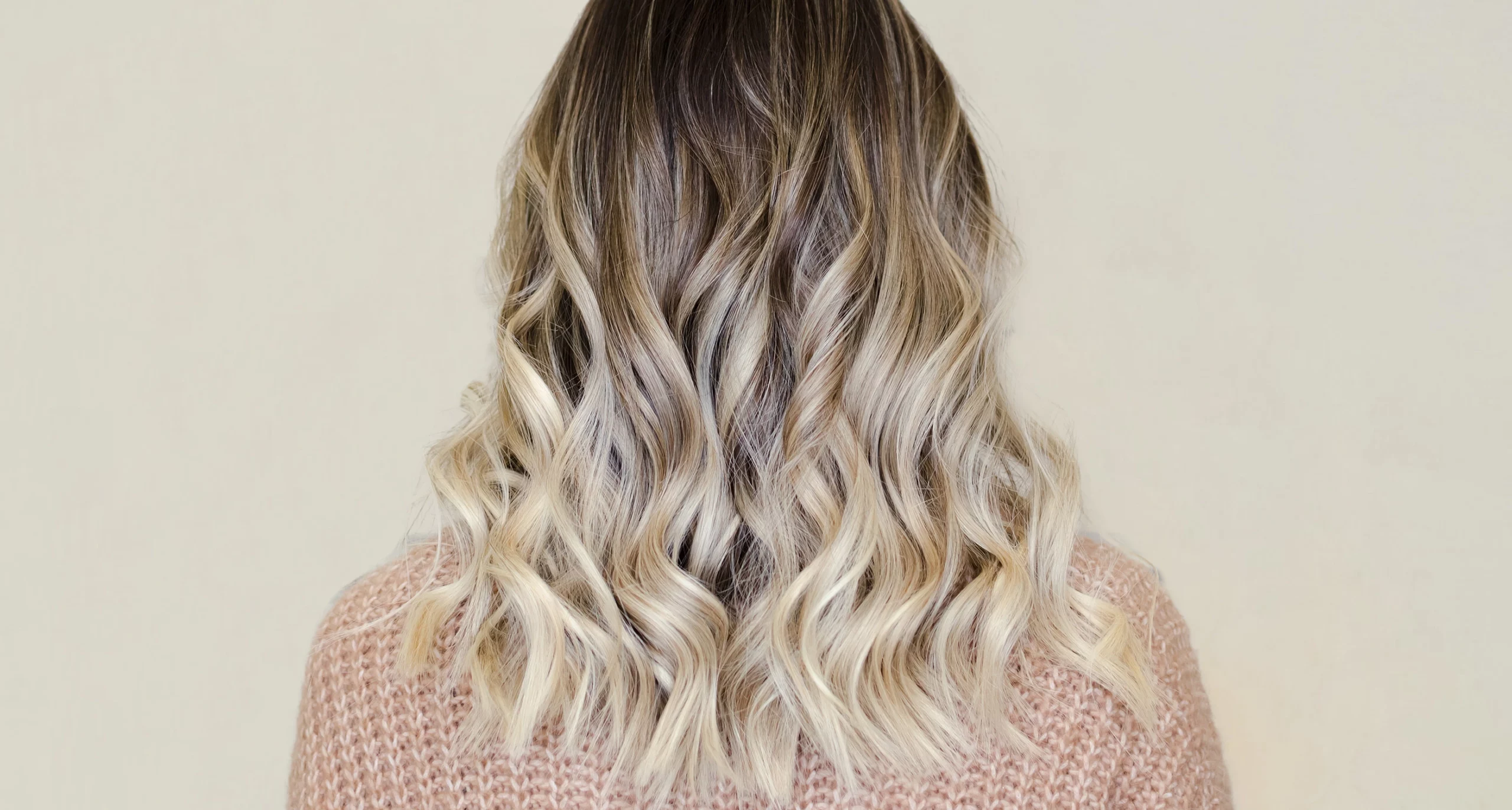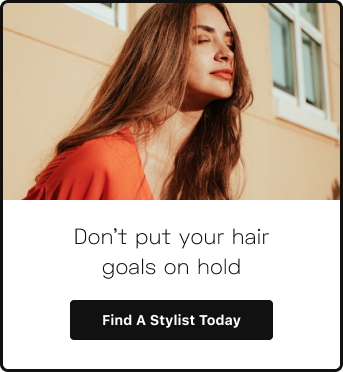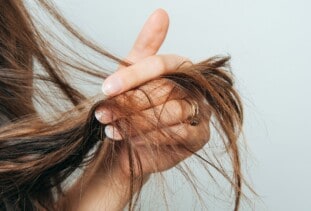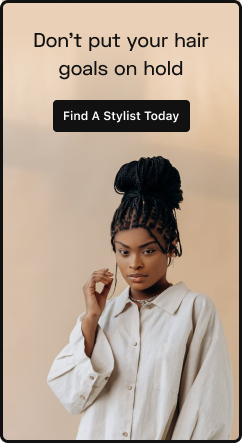Ever look in the mirror and think, “I’m ready for a whole new look”?
Many of us answer the call with a fresh chop or switching up our hair color. Year after year, two of the biggest color trends are balayage and ombré. Both color trends are beautiful, but salon customers often confuse the techniques because they look so similar.
You might wonder what the difference is between balayage vs. ombré, since they seem alike. However, both styles have their differences. Knowing the differences in these techniques can help you decide which one is right for you.
Main differences between balayage vs. ombré
Balayage is where a stylist paints the surface of the hair with a lightening formula to naturally incorporate color throughout the hair. Lowlights can also be added with balayage to better blend the hair. This creates a natural gradient throughout the hair. On the other hand, ombré blends dark-colored hair into light hair or vice versa for a two-toned appearance.
Both the balayage and ombré coloring techniques require your stylist to hand-paint highlights in your hair. Depending on the hairstylist applying your color, an ombré can be less dramatic and may look more like a balayage.
The two styles get confused when hairstylists blend the techniques together. However, according to the definitions of the styles, an ombré should have more contrast than a balayage.
Below we go into more detail on each styling technique.
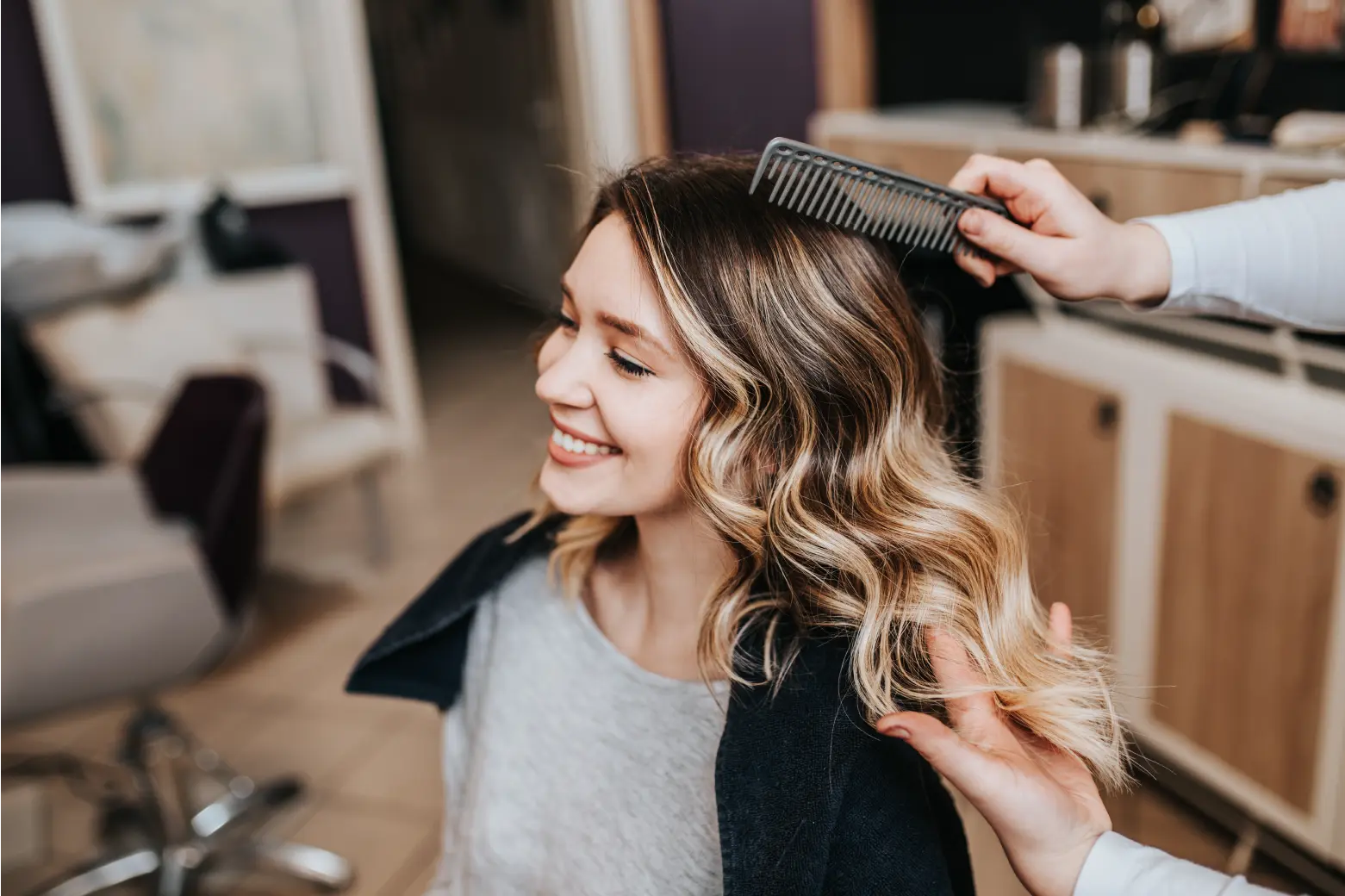
What is a balayage?
Like most chic things, these color trends are rooted in France. Balayage (pronounced: bal-yee-ahhge) is French for “to sweep.” When applying balayage, the stylist will sweep the color onto the hair and form a gradient highlight from top to bottom.
Not all of your ends will be touched by the hair color during a balayage. The transition from dark to light should be gradual and natural-looking, as if your hair was highlighted by the sun. Balayage can cost between $70 and $460.
Benefits of balayage
The balayage technique will give your hair a natural and sun-kissed look. No matter what color your natural hair is, a balayage will add dimension to your hair.
The highlights in a balayage will mix in with your natural color, and passersby may not be able to tell that your hair color is artificial! The balayage style also won’t require frequent touch-ups since your highlights will blend in well with the rest of your hair.
What is ombré?
Ombré (pronounced: ohm-bray) is French for “shadow.” When creating an ombré, your stylist will leave the top of your hair dark and apply highlights to almost all of your ends. Although your hair stylist will paint on your highlights gradually, the ombré has a dramatic contrast and two-toned highlight effect.
Benefits of ombré
An ombré will make a statement and can highlight the waves or curls at the ends of your hair. Because the top of your hair will remain dark, you won’t need to go to the salon to re-dye your roots. Unlike a balayage that has a more subtle feel to it, an ombré is a more dramatic look.
Balayage vs. ombré side by side
If you’re having a hard time choosing between the two coloring techniques, it can be helpful to see both styles side by side. If you’re still torn, a good stylist can help blend both techniques for a fresh look.
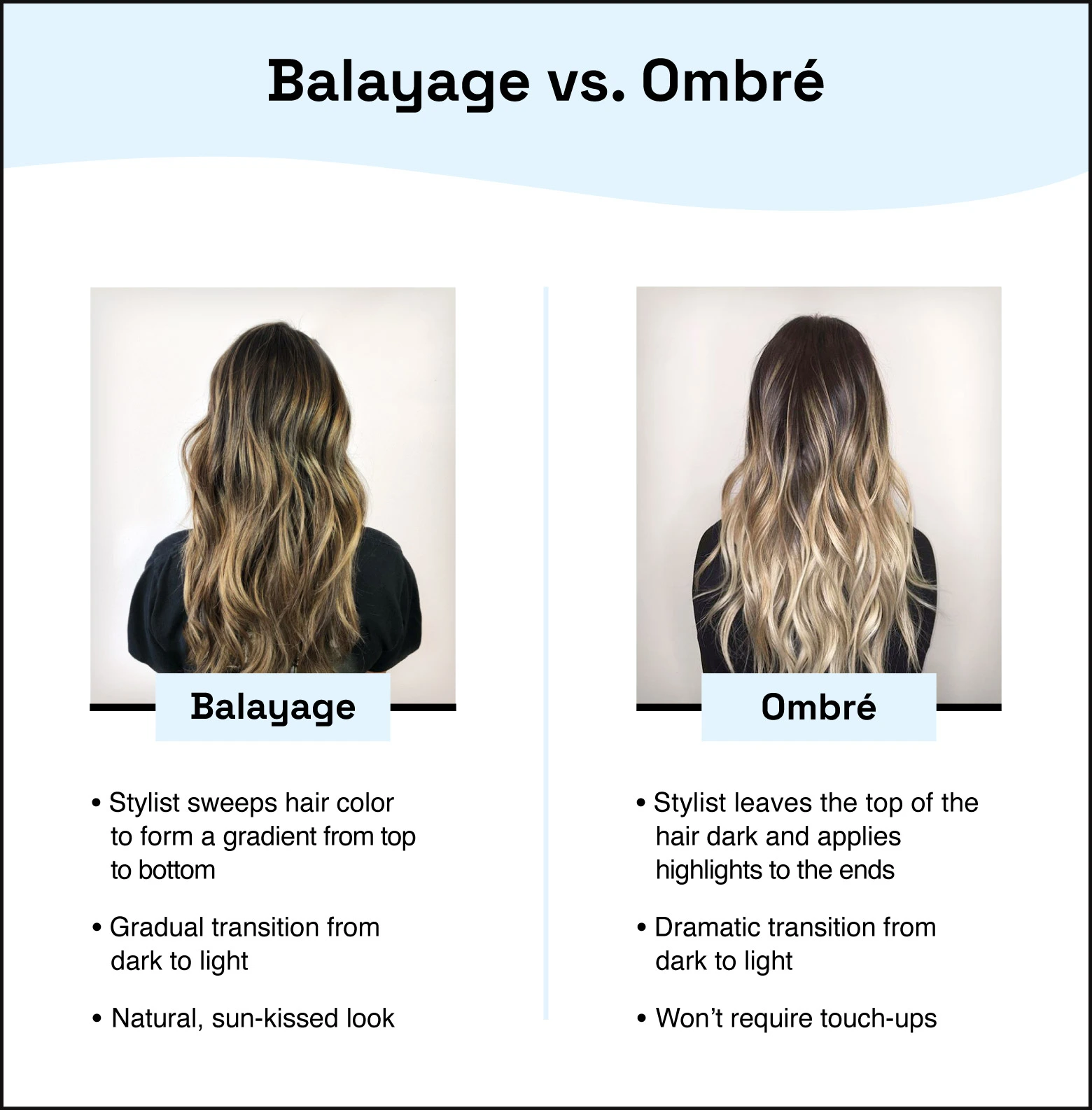
Other coloring techniques you can try
A sombré is a “soft ombré” for those who like the ombré technique but think a regular ombré is too dramatic in contrast. A sombré requires less maintenance than an ombré because the highlights will be more subtle than a traditional ombré. A sombré is great for those who are new to ombré hair and want to do some experimenting.
You can also try babylights, which are light and subtle highlights to finer sections of your hair, to brighten up your look.
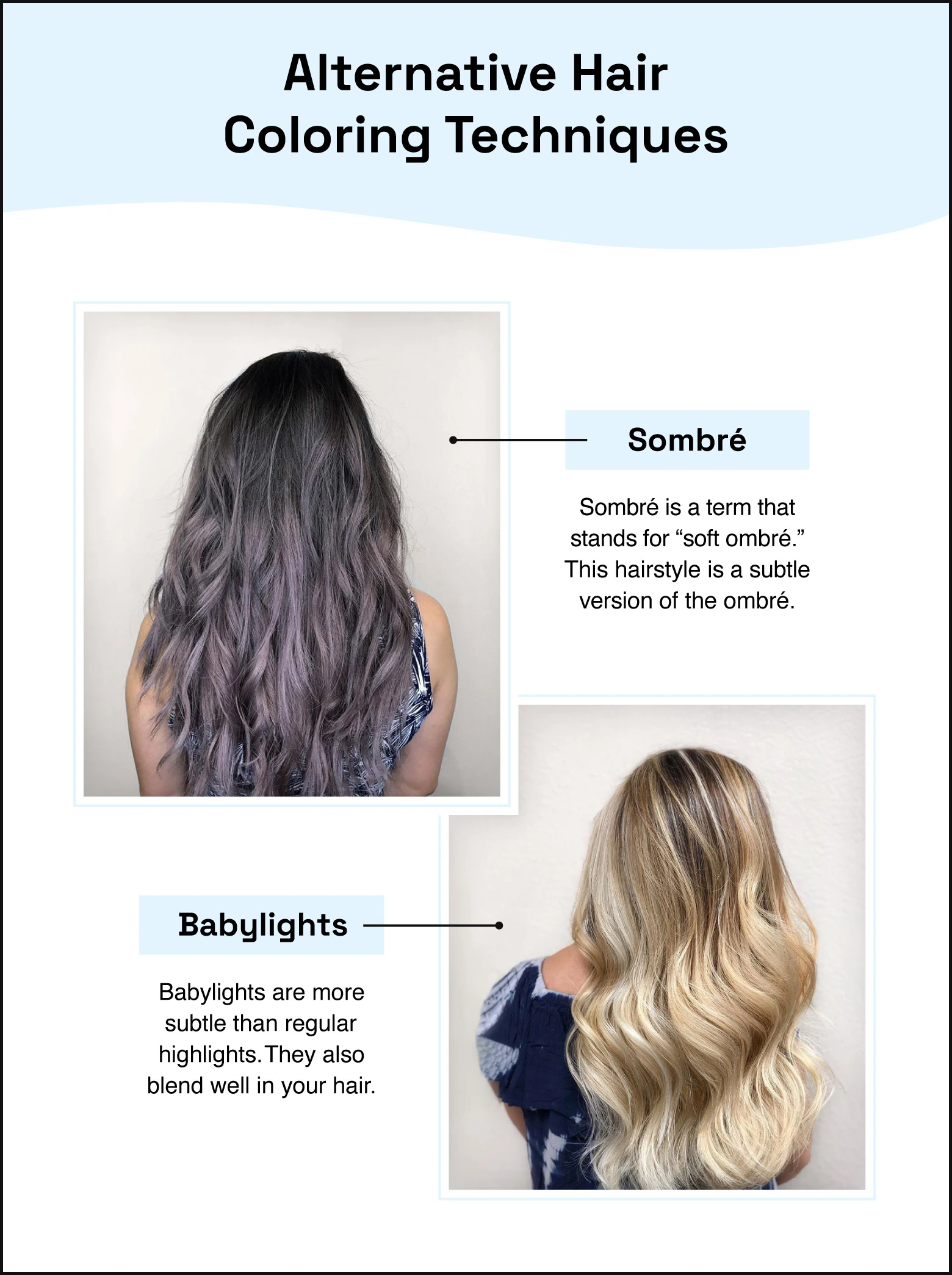
How to care for your color-treated hair
Whether you go for a balayage or an ombré, it’s essential to take care of your newly colored hair if you want healthy locks that feel and look great. The best way to take care of your hair is to use products made from quality ingredients. You’ll also want to keep an eye out for certain ingredients to avoid in your hair products. Investing time into hair care can make the cost of these highlights worth it in the long run.
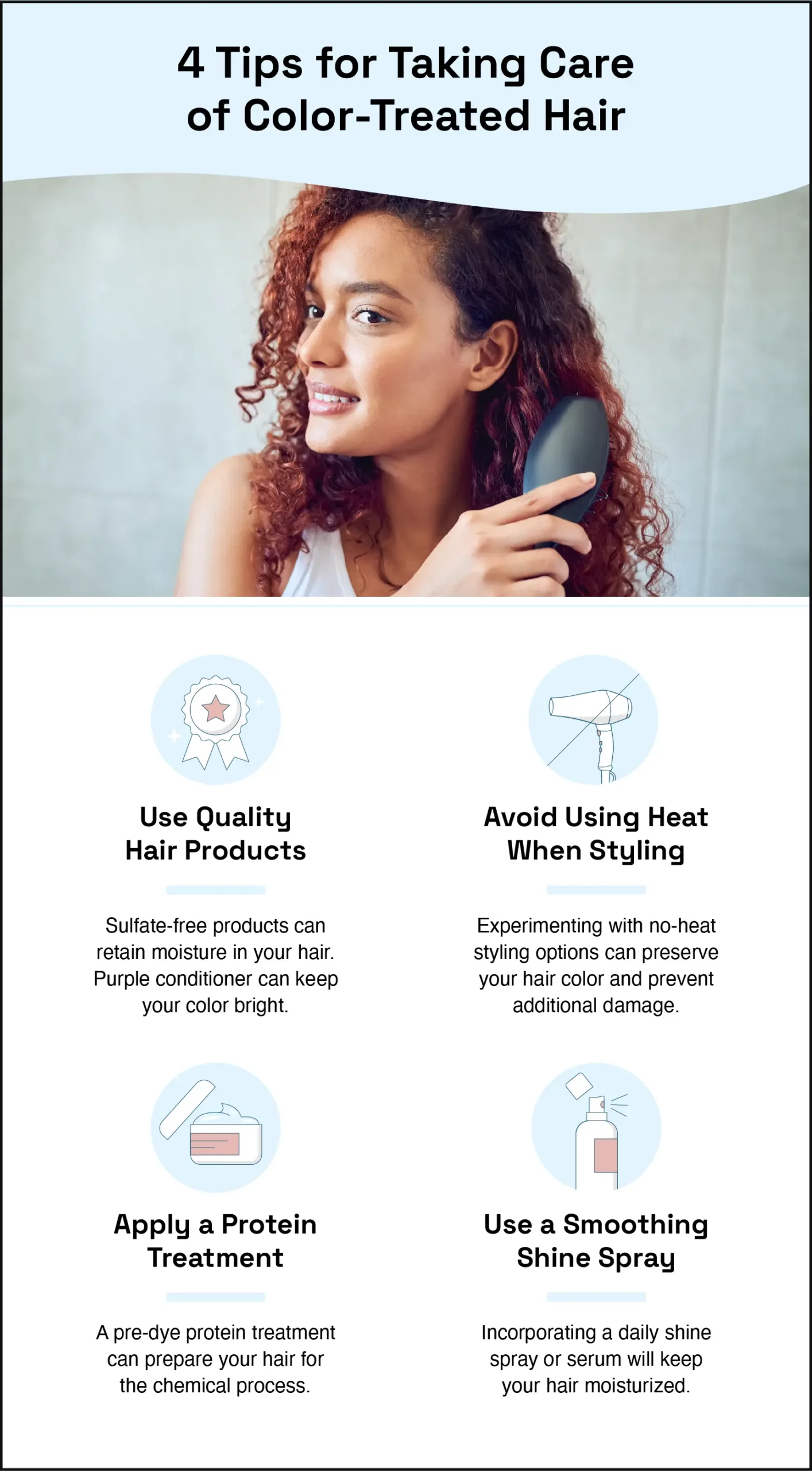
- Use quality hair products: Avoid sulfate in your shampoo and conditioner when your hair is color-treated. Sulfates can strip away the moisture and color in your hair. You can also use a purple conditioner or toner between visits to the salon to keep your highlights at their brightest.
- Invest in a shine spray: A shine spray or serum will keep your colored-treated hair moisturized and looking its best.
- Apply a protein treatment: Before dyeing, a keratin protein treatment can prepare your hair for the chemical process.
- Avoid heat styling: It’s OK to style your hair on special occasions, but your hair will thank you for experimenting with no-heat options for everyday looks.
The balayage and ombré hairstyles can be hard to decipher at first, but once you know the differences between them, you’ll likely know which one you prefer. If you’re having trouble choosing the right hair coloring technique to complement your look, you can reach out to our community of hair colorists to find inspiration.
